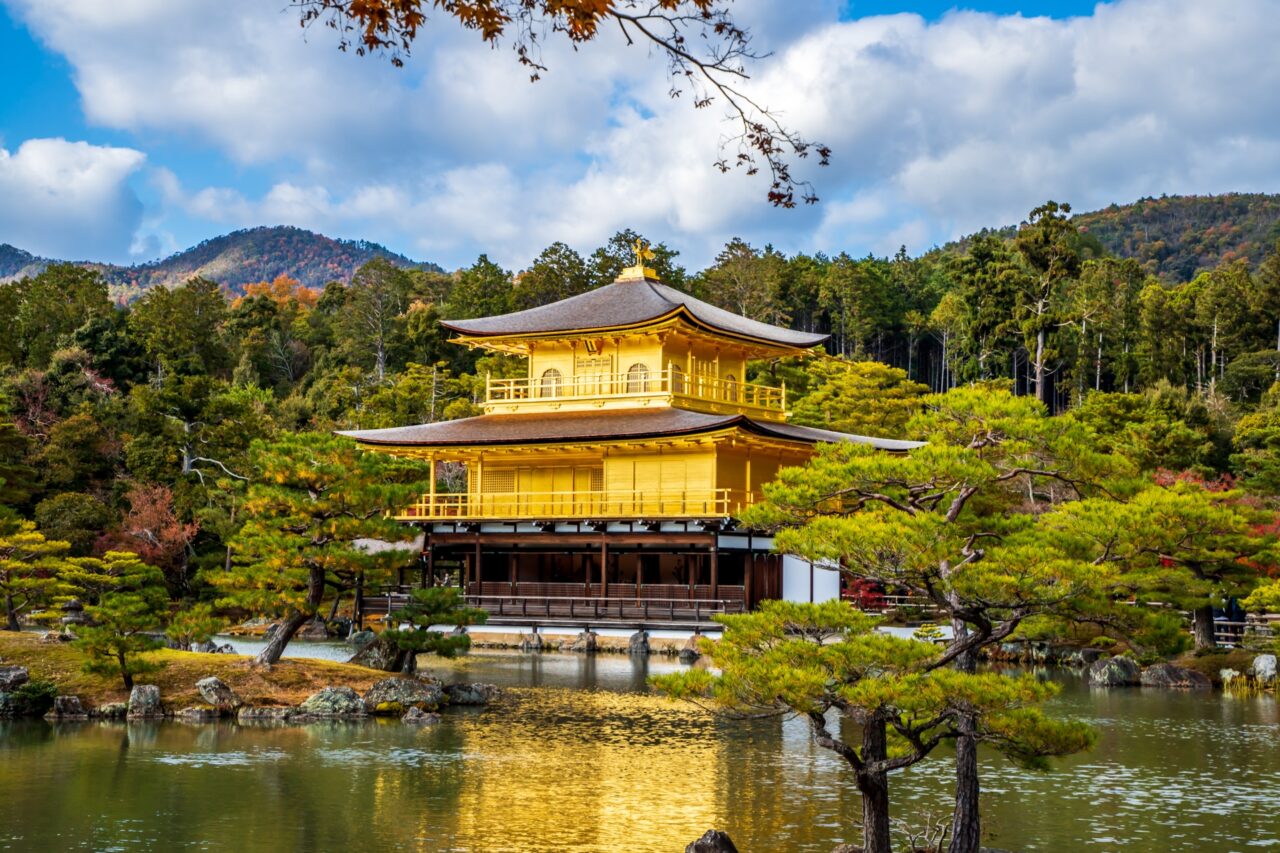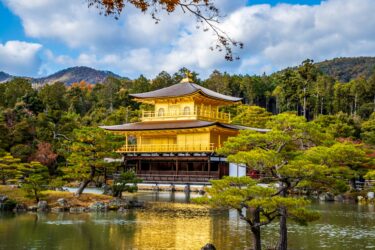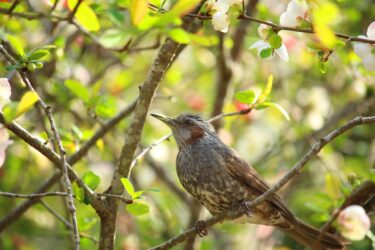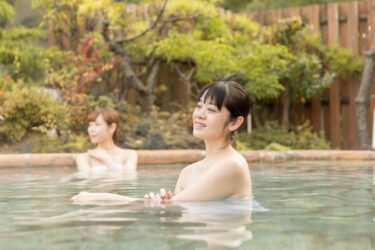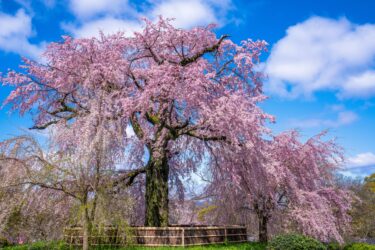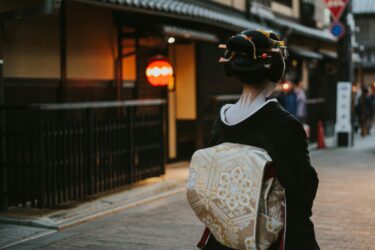Kinkaku-ji Temple, also known by its nickname, the Golden Pavilion, is one of Kyoto’s most iconic sights. The delicate, gilded structure of its most famous hall beside a serene pond draws visitors from around the world. Originally built as a retirement villa for the shogun Ashikaga Yoshimitsu, Kinkaku-ji has since transformed into a Zen temple and a UNESCO World Heritage site. The golden pavilion and its meticulously landscaped gardens are on just about every must-see list of sights in Kyoto, but for good reason.
History of Kinkaku-ji Temple
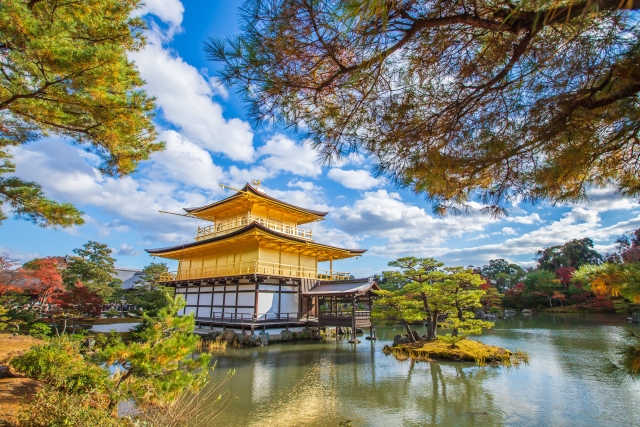
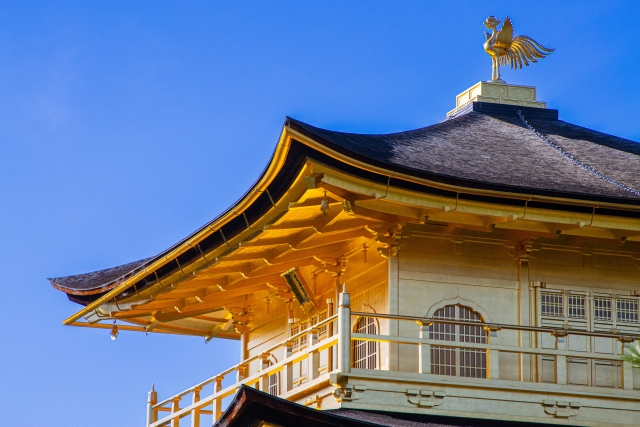
Kinkaku-ji’s story begins in the late 14th century when it was constructed as a villa for Ashikaga Yoshimitsu, one of the most influential shoguns in Japan’s history. The shogun wished to retire in elegance, and designed the villa to be both opulent and tranquil. After his death, his son converted the villa into a Zen temple in accordance with his father’s wishes. Over the centuries, the temple gained prominence not only as a place of worship but as a representation of the Muromachi period’s (1336-1573) architectural and cultural ideals.
The temple’s centerpiece is absolutely the Golden Pavilion, with its striking gold leaf exterior. Each of the three floors is built in a distinct architectural style: Each level of the pavilion reflects a different architectural style: the first floor is constructed in the shinden-zukuri style of 11th century aristocracy, the second in buke-zukuri, a style used in samurai residences, and the third in a zenshu-butsuden-zukuri, or Chinese Zen hall style. The pavilion has undergone meticulous restoration, particularly after it was destroyed by fire in 1950 and rebuilt in 1955. Today, Kinkaku-ji Temple is protected as part of the Historic Monuments of Ancient Kyoto, a UNESCO World Heritage site.
Location and How to Get There
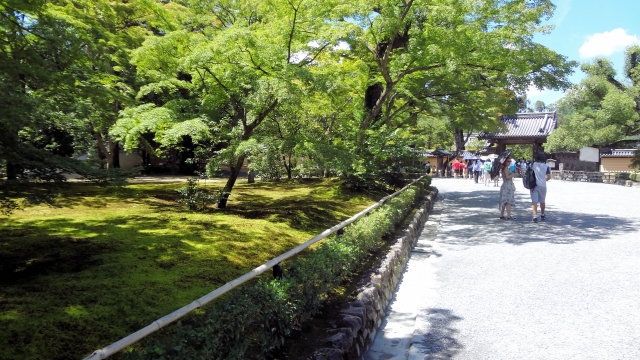
Kinkaku-ji Temple is located in the northwestern part of Kyoto, in a peaceful area surrounded by lush greenery and hills. Its slightly removed location from central Kyoto adds to its tranquil atmosphere, but it does mean you’ll probably have to make a trip to get there from downtown Kyoto, or Kyoto Station.
Transportation Options
Visitors can reach Kinkaku-ji conveniently by taking a direct bus from Kyoto Station (Bus No. 101 or 205) or by taxi, which is generally quicker but pricier. Of course, if you happen to be in northern Kyoto, or elsewhere in the city, the bus network is convenient and reliable enough to easily help you cross town. If you prefer exploring on foot, it’s a simple, 20-minute walk along a tree-lined road to reach nearby Ryoan-ji Temple, which we’ll take a closer look at below.
Highlights and Things to See at Kinkaku-ji
The Golden Pavilion (Kinkaku)

The main highlight of the Kinaku-ji Temple grounds is, of course, the Golden Pavilion itself. The three-story building shimmers with gold leaf, especially when sunlight catches it, and on still days, casts a golden reflection onto the Mirror Pond below. The pavilion is a rare fusion of architectural influences, and if you look carefully you can see how each floor of the building follows a different architectural tradition. The pavilion is breathtaking from any angle, but visitors will find the best views from across the pond, where it reflects perfectly on the water’s surface.
The Mirror Pond (Kyoko-chi)
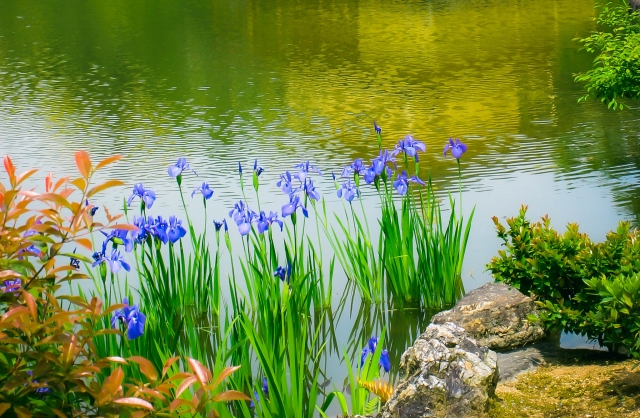
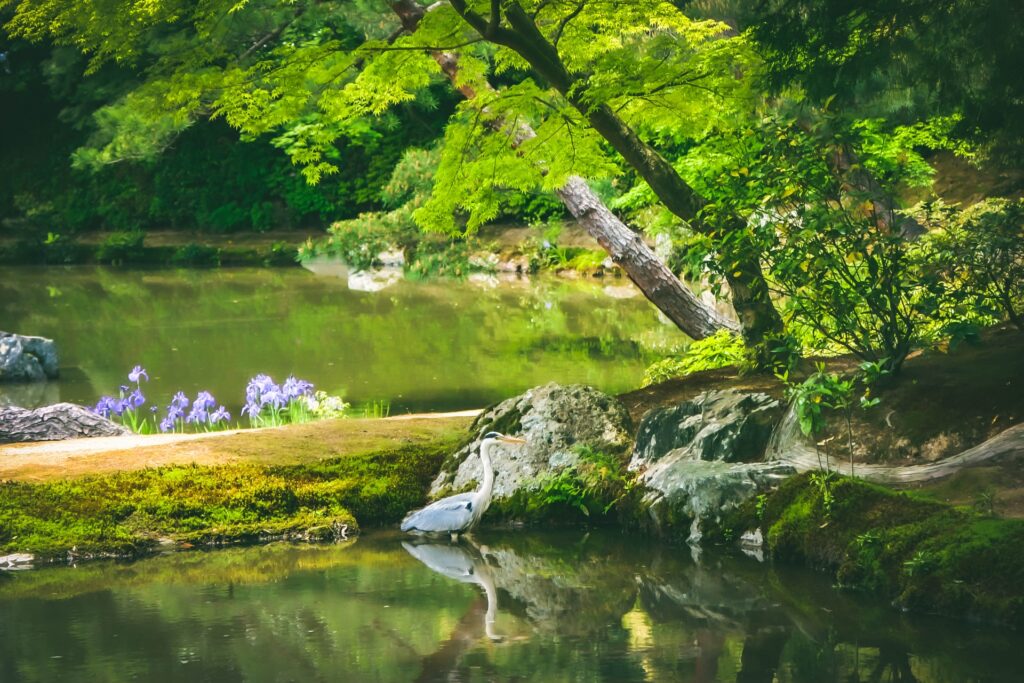
The Mirror Pond, or Kyoko-chi, is another beautiful feature of the temple grounds. This pond was carefully designed to frame the Golden Pavilion with various rock formations, small islands, and perfectly positioned trees. The reflective surface of the pond creates the illusion of a floating pavilion, as long as the surface of the water is still.
Other Features

Anmintaku Pond and Small Shrines: Near the main pavilion, you’ll find Anmintaku Pond and smaller shrine islands that add to the temple’s peaceful ambiance. These areas are lesser-known compared to the main pavilion’s grandeur, but are certainly worth a visit, especially to experience a more serene part of the Kinkaku-ji’s Temple.
Tea House and Gardens: The temple grounds feature traditional Japanese gardens inspired by Zen aesthetics, with meticulously pruned trees, stone paths, and moss. There is also a traditional tea house, Sekka-tei, which visitors aren’t able to enter, but you can look inside from the doorway at the simple, traditional room.
Nearby Attractions and Things to Do
Ryoan-ji Temple
Only a 20-minute walk from Kinkaku-ji, Ryoan-ji is another Zen temple, best known for its world-renowned rock garden. This minimalist garden consists of fifteen carefully arranged rocks and white gravel, a design that’s inspired thousands of visitors to sit in reflection on the platform nearby. Unlike the golden extravagance of Kinkaku-ji, Ryoan-ji is a study in simplicity, providing a striking contrast and an example of understated Zen philosophy.
Ninna-ji Temple
Located a bit further west of Kinkaku-ji (about 35 minutes on foot), Ninna-ji Temple is another significant historical site with deep imperial ties. Originally founded in the Heian period (794-1185), Ninna-ji is notable for its grand five-story pagoda and sprawling gardens. The temple is especially popular during cherry blossom season, as it’s known for a unique variety of late-blooming cherry trees called Omuro sakura. Visitors to Ninna-ji can explore the main hall, pagoda, and beautiful garden paths, which offer a quieter temple experience compared to Kinkaku-ji.
Haradani-en Garden
If you’re looking for a little more nature, Haradani-en Garden is a hidden gem just north of Kinkaku-ji. This privately-owned garden is especially stunning during cherry blossom season and the autumn months, when the foliage transforms into vibrant shades of red and orange. Haradani-en features a wide variety of flowering plants, cherry trees, and carefully maintained walking paths, making it an ideal spot for seasonal photography and relaxation away from the more crowded temple areas. The garden’s peaceful ambiance is perfect for unwinding after a visit to the Golden Pavilion.
Tips for Visiting Kinkaku-ji Temple

Best Time to Visit
Each season brings its own beauty to Kinkaku-ji. Autumn is especially popular, with the golden pavilion glowing beautifully alongside the red maple leaves, while winter offers a unique sight as–if you’re lucky enough to catch the sight!–snow dusts the pavilion and its surrounding gardens. If you’re aiming to avoid crowds, try visiting early in the morning or later in the afternoon on weekdays.
Admission and Etiquette
Admission fees at Kinkaku-ji are similar to those of other Kyoto temples, 300 yen for children to 500 yen for adults (as of November, 2024). The paths are clearly marked, and it’s important to stay on designated areas to protect the carefully curated grounds. Like most temples, Kinkaku-ji encourages quiet reflection, so speaking softly and respecting the tranquility of the surroundings is appreciated. Also, be aware that like many other temples, the grounds are open only between 9 a.m. and 5 p.m, so you’ll want to try to make your visit early!
Photography Tips
Capturing the Golden Pavilion and its reflection on the Mirror Pond is a must when you visit, and the best lighting typically occurs in the early morning or late afternoon. If possible, bring a wide-angle lens to fit in the pavilion, pond, and surrounding trees in one frame. And of course, if you’re lucky enough to visit Kyoto on a snowy day, there’s no more magical moment to capture on film than a snow-dusted Kinkaku-ji Temple.

